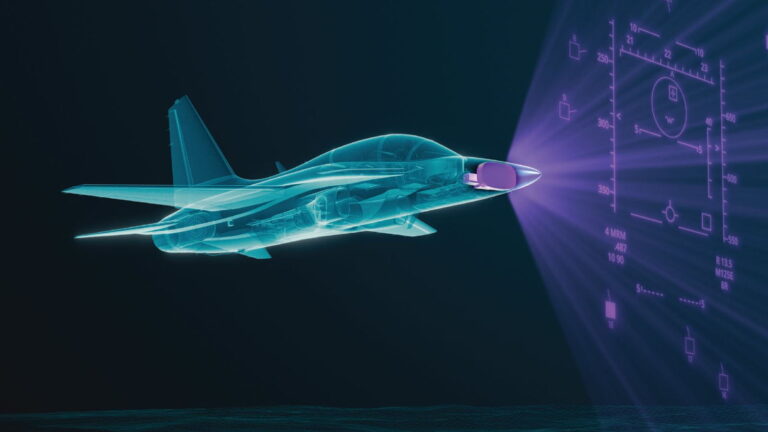
At the IDEF 2025 defence exhibition in Istanbul, Airbus and Turkish Aerospace Industries (TUSAŞ) signed an agreement that could significantly reshape Europe’s fast jet training architecture. The deal outlines a partnership to deliver up to 30 Hürjet aircraft to the Spanish Air Force, with the final sales contract expected by the end of this year and first deliveries planned for 2028.
The agreement builds on a memorandum of understanding signed in May between TUSAŞ and a Spanish defence consortium led by Airbus. It now formalizes workshare arrangements and defines the roles of each party in the procurement and integration process, marking what both sides describe as the final preparatory step before an order is placed.
Platform Still in Development
While the Hürjet has completed over 210 test flights and reached supersonic speeds, the aircraft is still under development. Airbus representatives have acknowledged one of the major challenges ahead: customizing the aircraft for Spain while the core development is still ongoing.
“We need a basic aircraft as the foundation, and that aircraft is currently under development,” said Jean-Brice Dumont, Head of Air Power at Airbus Defence and Space. “Once that’s ready, we can move forward with Spanish customization. These two efforts will proceed in parallel. However, we must be careful not to overburden the core development team during this process.”
The planned integration of Spanish-specific requirements, including software and training systems, will therefore have to align carefully with TUSAŞ’s ongoing engineering schedule.
More Than an Aircraft
Beyond airframe delivery, the agreement includes the development of a complete pilot training ecosystem, which Airbus defines as involving simulators, software solutions, and connected ground-based systems. This reflects a broader trend in modern air forces: training pilots not only on performance platforms but within interconnected, adaptive training environments.
The Hürjet Training 360 System, developed by TUSAŞ, already includes an Embedded Training System (ETS) linked with Ground-Based Training Systems (GBTS)—designed to reduce the transition time to fifth-generation fighter aircraft. The aircraft’s cockpit and avionics are tailored with this goal in mind.
According to TUSAŞ, the Hürjet is intended to replace outdated training jets and prepare pilots for operating platforms such as the F-35 or next-generation fighters. The aircraft is targeting a maximum speed of Mach 1.4 and features a single-engine configuration, allowing for reduced maintenance and fuel consumption.
Industrial and Political Dimensions
The agreement also satisfies demands from the Spanish Ministry of Defense for domestic industrial involvement. Airbus has committed to integrating Spanish content into the Hürjet program and establishing industrial ties between Turkish and Spanish entities.
“This is not just about selling aircraft,” said Dumont. “It’s about building a training capability that meets Spain’s needs, while also fulfilling industrial policy requirements.”
TUSAŞ General Manager Mehmet Demiroğlu emphasized the strategic dimension of the deal, noting that cooperation with Airbus demonstrates how far Turkish aerospace has advanced in recent years.
“This is not just an export success—it is a testament to the technological level that the Turkish aviation industry has reached,” he said at the signing ceremony, which was attended by Haluk Görgün, President of Türkiye’s Defence Industries Secretariat (SSB).
Demiroğlu also underlined the longer-term ambition: a greater role for Turkish engineering in future European aviation projects.
Outlook
This deal could serve as a precedent within NATO and the EU. With several European countries reconsidering their jet trainer fleets, the Hürjet may attract further attention due to its digital capabilities, modular architecture, and cost-efficiency. If successfully integrated into Spain’s pilot training pipeline, it would mark the first time a Turkish-developed combat jet enters operational service in a Western European NATO country.
For Airbus, the project is also an opportunity to reinforce its presence in trainer development and tap into new synergies outside its traditional platforms. For TUSAŞ, it is an opening to consolidate export credibility in one of the world’s most competitive defence markets.
Why it matters:
The Airbus–TUSAŞ agreement on Hürjet is not just a bilateral export arrangement. It reflects broader shifts in European defence industrial cooperation, training doctrine evolution, and NATO capability planning. As legacy aircraft are phased out and fifth-generation fighters take centre stage, Europe’s choices in training systems will shape the operational readiness of its future air forces.
By: Katerina Urbanová
Photo: TAI Hürjet in Teknofest 2021 at Istanbul Atatürk Airport, Turkey.
Credit: CeeGee – Trabajo propio





